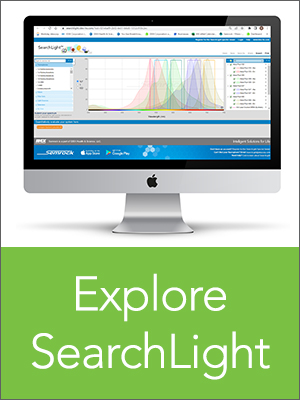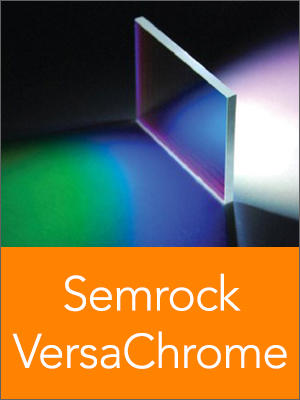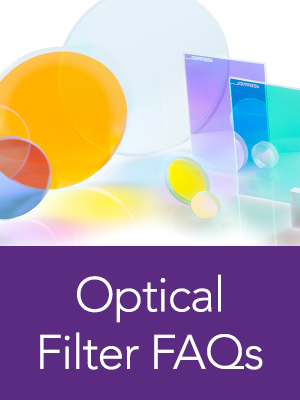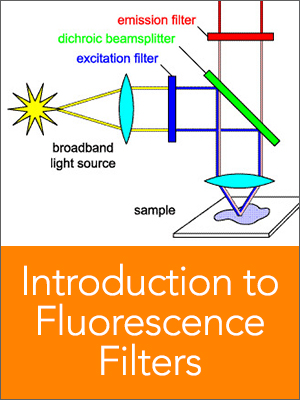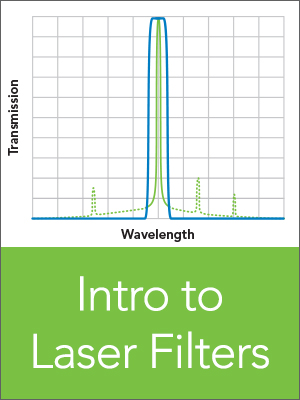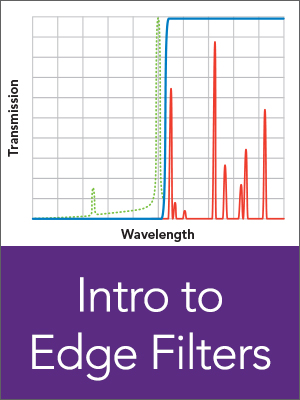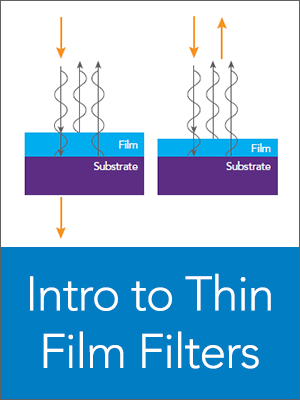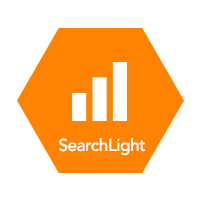
Introduction to Optical Bandpass Filters
What is an optical bandpass filter?
An optical bandpass filter only allows a specific range of wavelengths of light to pass through while blocking all other wavelengths.
Optical Bandpass Filter Design
Optical bandpass filters are typically characterized by their central wavelength, bandwidth, transmission, and blocking.
- Transmission: The percentage of light, T, that passes through the filter passband.
- Blocking: Measured as Optical Density (OD), defined as OD = – log10 (T).
- Edge Steepness: The wavelength interval needed for transition between high transmission and blocking.
NOTE: While the passband often refers to the theoretical filter performance derived from design specifications, Semrock prefers to use manufacturable specifications which describe the actual filters as received by the customer.
What does “bandwidth” mean?
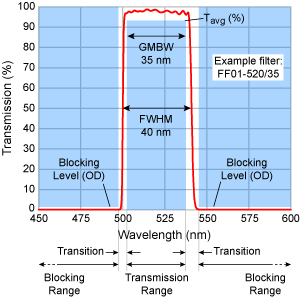
Semrock uses a “manufacturable specification” approach to define the bandwidth of our optical bandpass filters. We believe this approach more accurately reflects the performance of the filter in an optical system.
As shown in the diagram, the filter spectrum (red line) will, on average, lie within the unshaded regions. For a filter with Part Number FF0n-{CWL}/{GMBW} the average transmission over the Transmission Range will meet the Tavg specification, and the center wavelength and the passband width will respectively meet the specifications for CWL (passband center wavelength) and GMBW (Guaranteed Minimum Bandwidth over the specified Tavg). Over the Blocking Ranges, (the average fractional T, on [0,1]) will not exceed 10^(-OD), where OD refers to the blocking level specification.
Featured Resources
How are optical bandpass filters used?
Optical bandpass filters are used in diverse fields such as Spatial Biology, PCR, Quantum Computing, and Wearable Medical Devices, most of which rely on the fluorescence emitted by specially designed molecular probes.
- PCR is one of the most sensitive ways to detect presence of COVID and other serious disease entities. The technique relies on amplifying sample DNA modified to emit fluorescence depending on the DNA contents. The fluorescence passes through a bandpass filter and indicates if the sample has COVID DNA or not.
- Spatial Biology studies tissues in their natural 2D or 3D environment. It is similar, in concept, to an aerial survey to understand the ecology of an area in detail. Fluorescent probes are added to the tissue, emitting light to reveal local conditions, including details on RNA content. Bandpass filters clean up the signals so they can be interpreted correctly.
- A Wearable Medical Device lies on the skin and shines a small beam of light into the region on or below the skin. A small injectable bead with a fluorophore that emits light corresponding to the body’s signals (e.g. glucose) being monitored. The bandpass filter selectively passes the light to the detector.
Learn More About Our Bandpass Filter Product Families
| Semrock Optical Bandpass Filters | |
| Nanopede™ | For Essential Performance |
| Avant™ | For Highest Performance |
| BrightLine® | For Versatile High Performance |
| VersaChrome® | For Angle-tunable Bandpass |
| MaxLine® | For Laser Cleanup |
| MaxDiode™ | For Laser Cleanup |



